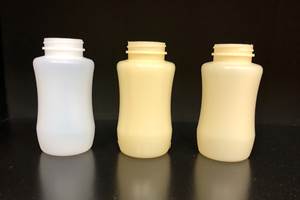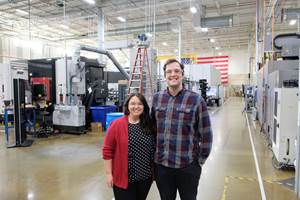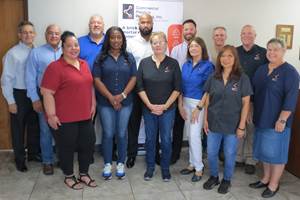An Opportunity by Design
At the very moment that intensifying public pressure pushes the plastics industry to address waste in the environment, the sector is stepping up to reclaim the valuable materials it’s created.
“A mistake by design” — that’s how Beltrán Orrego sees any plastic waste, particularly if that plastic waste has escaped into the environment. This instinctive reaction to litter is most visceral when it’s in nature, where seeing discarded man-made objects, whether it’s a water bottle or abandoned car, reflects a jarring human encroachment on the natural world.
Orrego works with Chilean injection molder and recycler Comberplast, which launched its Atando Cabos project to pull waste plastic from the environment and repurpose it into new items. Its primary source of such waste is the salmon-farming detritus in the Patagonia. On vacation in the region years ago, it was one of Comberplast’s founders whose encounters with abandoned ropes and nets amongst the grandeur of the fjords and channels became an impetus to do something. In this issue, you can read about Comberplast’s latest project partnering with one of the world’s largest producers of lithium to create reusable plastic pallets from that recovered fishing waste, as well as the lithium firm’s in-house plastic scrap.

The plastics industry perceives the promise and potential of plastic scrap. Source: Getty
For people like Orrego, that work in the plastics industry seeing everyday items fabricated from the highly engineered materials we know discarded as trash does indeed seem like a “mistake.” Early in my career, I sat in on a presentation discussing the various breakthroughs achieved in the package design for a “sports drink” bottle. The bottle in question featured a series of raised panels. Each distinct panel and its various facets, which I had thought to simply be decorative flourishes, were in fact the patented outcome of hours of engineering work that enabled the plastic container to withstand the hot-filling process and replace glass, resulting in a package that would dramatically cut the beverage’s weight and the CO2 emissions required to ship it. To this day, when I see a sports drink bottle or any plastic product, I consider the purposeful engineering that went into its design, thinking about the specific material grades and additives it’s made from and the specialized machines and molds that created it.
In addition to Comberplast, in this issue you can read about Mexican film extruder Bioflex applying new technology to process postindustrial and postconsumer plastic waste into new films; Nova Chemicals writing about the opportunities to be exploited in mechanical recycling of plastics, including its own new facility for reclaiming postconsumer polyethylene; and the challenges of sourcing reclaimed polypropylene, particularly as some studies point to the contamination of food-contact-intended streams with recycled electronic waste.
This confluence of content is no accident. At this moment in the industry, an overwhelming interest to redirect plastics products in their end of life out of the environment is met by innovative players and technologies specifically targeting that very plastic “waste” as an untapped resource. The old adage holds that one man’s trash is another’s treasure, and that might be true, but I think we can all agree that treating treasure as “trash” is surely a mistake.
Related Content
How to Extrusion Blow Mold PHA/PLA Blends
You need to pay attention to the inherent characteristics of biopolymers PHA/PLA materials when setting process parameters to realize better and more consistent outcomes.
Read MoreScaling Up Sustainable Solutions for Fiber Reinforced Composite Materials
Oak Ridge National Laboratory's Sustainable Manufacturing Technologies Group helps industrial partners tackle the sustainability challenges presented by fiber-reinforced composite materials.
Read MoreHow to Optimize Color Evaluation of Recycled Plastics
The right color measurement instrument and good working methods will minimize variability in color evaluation of PCR.
Read MoreInside the Florida Recycler Taking on NPE’s 100% Scrap Reuse Goal
Hundreds of tons of demonstration products will be created this week. Commercial Plastics Recycling is striving to recycle ALL of it.
Read MoreRead Next
See Recyclers Close the Loop on Trade Show Production Scrap at NPE2024
A collaboration between show organizer PLASTICS, recycler CPR and size reduction experts WEIMA and Conair recovered and recycled all production scrap at NPE2024.
Read MoreBeyond Prototypes: 8 Ways the Plastics Industry Is Using 3D Printing
Plastics processors are finding applications for 3D printing around the plant and across the supply chain. Here are 8 examples to look for at NPE2024.
Read More











